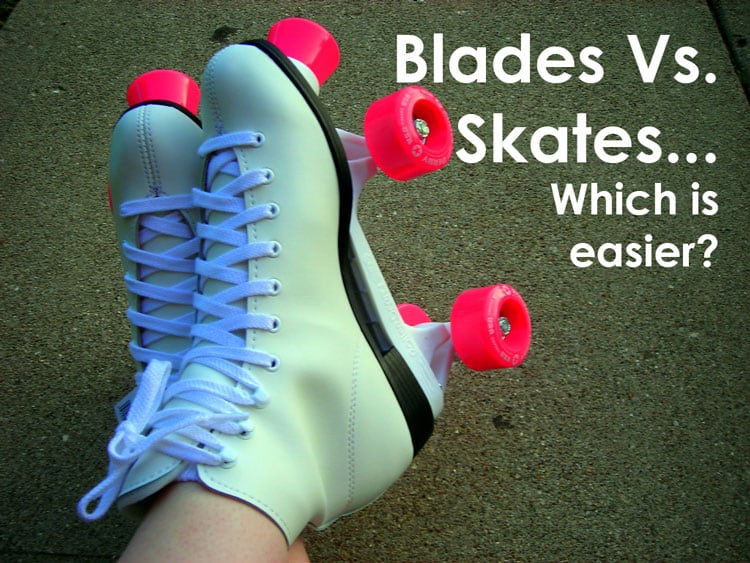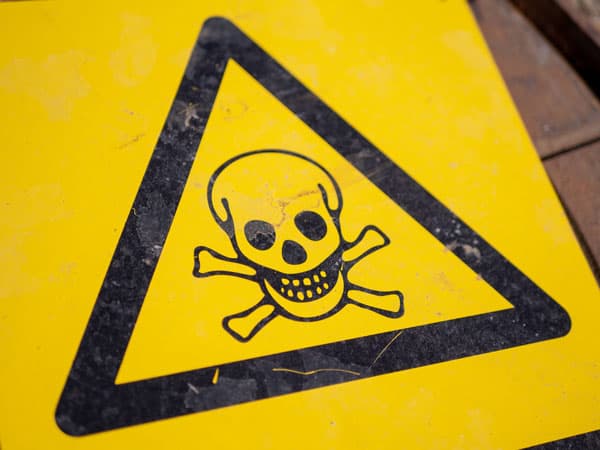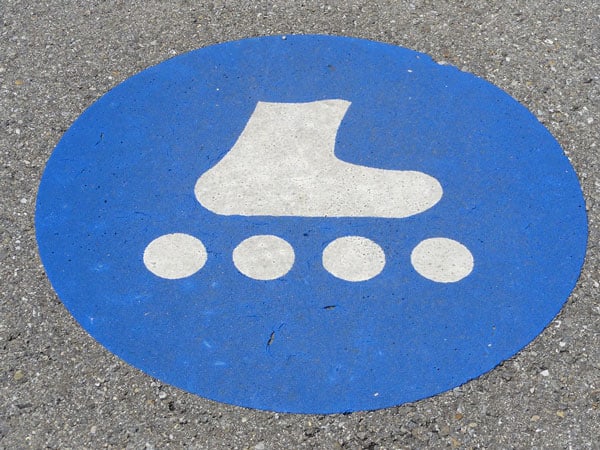I was recently talking to my skater friends about whether inline skates or roller skates were easier. After doing a little research, I think I’ve got the answer.
So, what’s easier out of rollerblading and roller skating? Rollerskates may be easier for very young children whose muscles are less developed as standing upright and moving slowly is a bit easier. Teenagers and adults often progress faster on inlines which are agile, and pick up speed outdoors easily. But there is not a huge difference between the two.
That said, it turns out roller blades and roller skates are easier for different things, so it really depends on what you want to do. There is quite a bit to consider.

What’s The Biggest Difference Between Inlines and Rollerskates?
The main difference between inline skating and rollerskating comes from the wheels.
It’s easier for a beginner to stand upright with rollerskates because they have wheels to the left and right of the centre of your foot. This can make them suitable for beginners because you feel more stable on them, and going slowly can feel easier. Because less leg muscles are required to keep your balance, they can be better for very young children whose muscles may struggle to keep them upright on inline skates.
However, when it comes to getting comfortable with moving in multiple directions and negotiating obstacles, it may be easier to change the direction of each individual inline skate. With narrower wheels arranged in a line, you can weave blades in and out more easily while both skates remain on the ground. Rollerskates can get “stuck” going straight making it harder to weave your skates.
The back brake of inline skates is also arguably a more natural motion as it requires you to apply force to your heel while extending your leg. Beginners may find this easier than the front brake of roller skates that requires you to drag your foot and apply pressure at the same time. But it does come down to personal preference too.
However, both skates require you to keep your knees bent and to get familiar with the slight movement of the wheels beneath your feet to balance. So both require an initial learning curve and the difference between inlines and roller skates is not night and day. If you’re planning on keeping things very slow and simple rollerskates provide the additional balance, but inlines allow you to skate further more easily outside once you’ve got over the learning curve.
(in either case, you may want wrist guards – here’s a couple wrist guards to consider)
Which Is Easiest To Stop – Rollerblades or Rollerskates?
Both skates require you to learn how to stop.
Stopping with inline skates that have a brake
Inline skates come with a brake fitted on the back (not always). To brake, you bend both knees in a semi-squat with your torso leaning forward to balance, and extend one leg out letting the back-brake push along the floor in front of you. Most beginners find this movement fairly easy to pick up. Applying pressure with the heel is a muscle movement we do in the course of moving around in general and may therefore feel more natural.
Stopping with rollerskates
Rollerskates have their brake on the front and you have to drag your leg behind you allowing the brake to rub against the floor. This movement is arguably a less natural one, particularly in applying a force downwards in that position while maintaining balance. However, it is also not usually too difficult for beginners to pick up relatively quickly.

Inline skates without brakes
Often inline skates come without brakes so in these cases it can be much more difficult to stop. Having no brakes means it is not so obvious what to do. You have to learn the specific technique and if there’s no one around to tell you then this can create issues.
With no brakes, you drag one foot behind at right angles to your other so it forms a T-shape. You drag the wheels in this perpendicular position along the ground, using the bottom inside edge of all four wheels at the same time as the brake.
This is a bit more difficult to learn than stopping with a brake attached. This is because it is a slightly more unnatural pose to have one foot pointing at 90 degrees to the other whilst being behind you, compared to both feet facing in the same direction when you have a brake attached.
However, for both rollerblades and rollerskates you have to go through the process of learning to stop. It may take just slightly longer to learn with one or the other but it’s not going to take you ten times as long and the difference in difficulty is quickly erased after you practice for a while.
What’s More Dangerous – Inlines or Quads?
Neither rollerblading or rollerskating are particularly dangerous, despite first impressions. The evidence suggests both are similar in the risks they present.

In 2001, the US Consumer Products Safety Commission compared the amount of injuries per 1000 participants across various sports and found inline skating less dangerous than some other much more popular sports.
Out of every 1000 inline skaters, 3.4 reported severe injuries requiring hospitalization. For cycling it was 4.1 out of 1000, for soccer it was 8.6, and for basketball is was 8.8. By this measure inline skating is less dangerous than these sports, but more dangerous than tennis (2.6), golf (1.2) and swimming (0.7).
Most inline skaters who suffer serious injuries do so to their wrists. Out of all serious injuries, 24.2% are to wrists, according to the National Electronic Injury Surveillance System (NEISS) . Lower arms (13.5%), elbow (7.6%) came in second and third respectively. According to the CPSC a third of serious injuries could be prevented by wearing wrist guards.
Roller skating in rinks also had similar findings regarding injury location, with 23% of injuries being to the wrist, followed by the shoulder (20%), elbow (15%) and ankle (12%). These injuries may be in different proportion because this study looked just within rinks, where the main factor leading to injury was collision with other skaters.
But, as mentioned above, both sports fit somewhere in the middle of danger and are not as dangerous as some much more popular sports.
You may fall over a scrape your hand, but less likely to suffer serious harm.
Indoors Versus Outdoors Skating
Both types of skates work well outdoors and indoors but some terrains will favour one skate over the other, but generally inline skates are easier to travel faster and further outdoors because of the wheel arrangement.
Small stones can get more easily caught between two wheels of inlines because the wheels are close together, stopping those wheels and tripping the person. The less space inline wheels take up could arguably make them easier to dodge small objects too, however. But generally, the narrow arrangement of inline skates works best over outdoors terrain.

Roller skates are most often used indoors in roller derby’s and roller discos, for example. There are some historical reasons for this as quad skates became very popular in the 1860s and beyond as skating rinks were opened for that purpose.
It is also easier to go faster on rollerblades because their wheel arrangement results in less friction, and they sometimes have bigger wheels. Being able to go faster does make a big difference when you are outside.
You generally see more people skating outside on rollerblades, in part because more people in general buy rollerblades, but also because they are faster so it’s easier to travel further with them.
Which Should I Choose – Blades or Rollerskates?
Choosing which is completely down to your personal preferences and circumstances and what you are going to be using the skates for. In terms of learning curve, there is a learning curve for both and the difference here is not enormous.
If you have very young children it might make more sense to buy them rollerskates because they are easier to stand up and balance on, whereas their less developed ankle and leg muscles might mean they struggle to stabilize the rollerblades. However, rollerblades are also a very popular option and are usually completely fine for young children to use.
If you have a specific sport in mind then it should be clear what skates you should buy. Rollerderby uses rollerskates, whilst speed skating use inline speed skates. Rollerskates are also used for dancing.
If you are looking for leisure skating, you could choose either but it’s worth noting that inlines are easy to go fast on. This doesn’t mean you’ll be speeding around when you first learn, unable to control yourself, but that you’ll be using your muscles more efficiently to cover the distance. You have to be quite a bit better at rollerskating to keep up with the speed you can get more easily with rollerblading.
You also may just have a visual preference over one skate and its associated style, and it’s fine to make a decision based on that too. Perhaps you simply like the look of rollerskates, you’ll be fine with them if you put in the time to learn.
Overall just because they can move around more efficiently, blades are probably better for everyday use in a practical sense.
Related Questions
Which skates are better for young children? For young children around 7 years and before they become a teenager, rollerskates may be better because of the additional balance they offer, and because young children’s ankles might not be strong enough yet to learn rollerblades easily.
Is rollerblading easier than ice skating? Both are fairly similar in difficulty, though there is more ankle support in rollerblades.
Is rollerblading hard? People from all walks of life can learn to rollerblade with a little practice. It can seem very hard at the start but progression is not too difficult.

